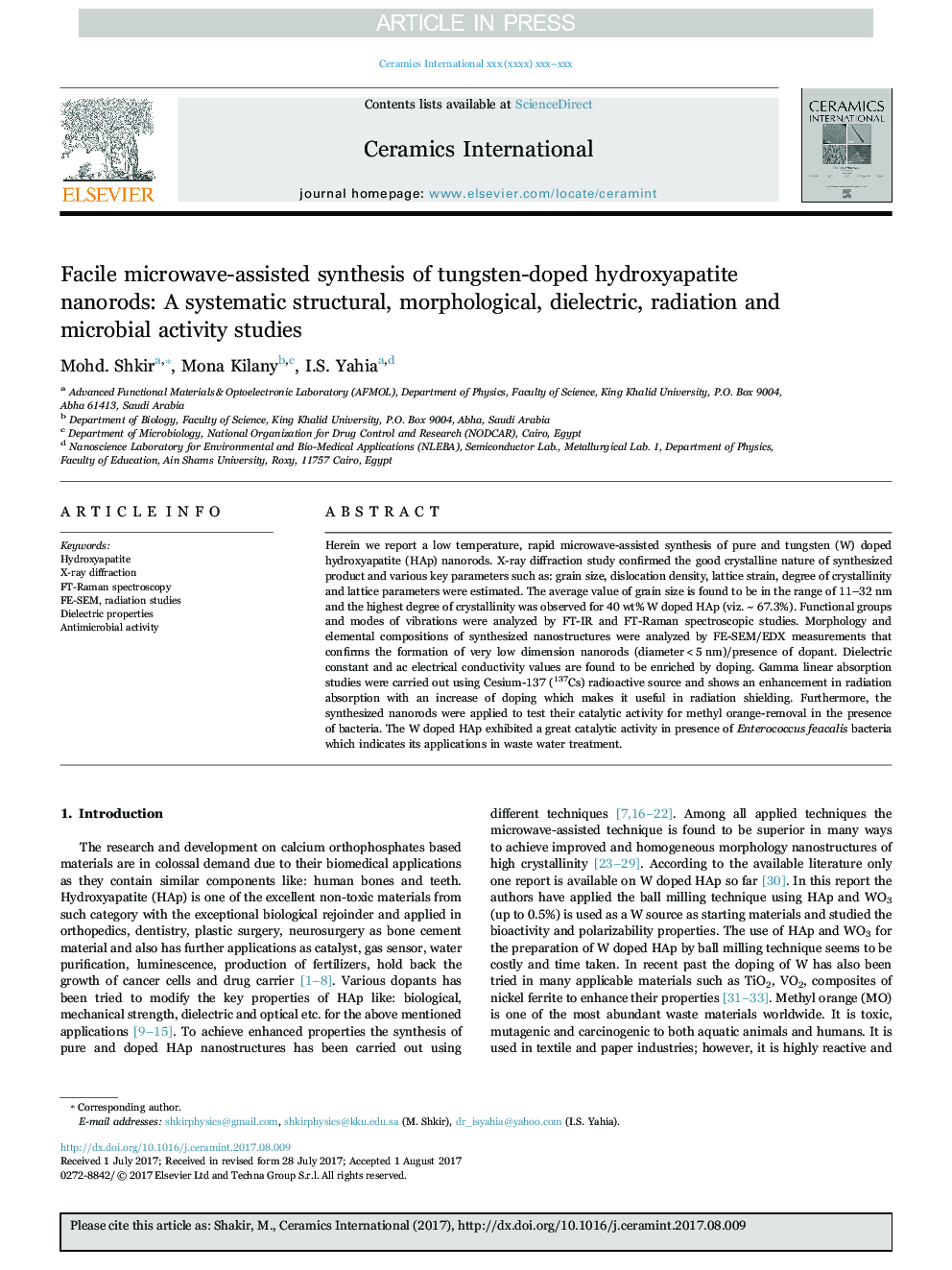| Article ID | Journal | Published Year | Pages | File Type |
|---|---|---|---|---|
| 5437376 | Ceramics International | 2017 | 9 Pages |
Abstract
Herein we report a low temperature, rapid microwave-assisted synthesis of pure and tungsten (W) doped hydroxyapatite (HAp) nanorods. X-ray diffraction study confirmed the good crystalline nature of synthesized product and various key parameters such as: grain size, dislocation density, lattice strain, degree of crystallinity and lattice parameters were estimated. The average value of grain size is found to be in the range of 11-32Â nm and the highest degree of crystallinity was observed for 40Â wt% W doped HAp (viz. ~ 67.3%). Functional groups and modes of vibrations were analyzed by FT-IR and FT-Raman spectroscopic studies. Morphology and elemental compositions of synthesized nanostructures were analyzed by FE-SEM/EDX measurements that confirms the formation of very low dimension nanorods (diameter<5Â nm)/presence of dopant. Dielectric constant and ac electrical conductivity values are found to be enriched by doping. Gamma linear absorption studies were carried out using Cesium-137 (137Cs) radioactive source and shows an enhancement in radiation absorption with an increase of doping which makes it useful in radiation shielding. Furthermore, the synthesized nanorods were applied to test their catalytic activity for methyl orange-removal in the presence of bacteria. The W doped HAp exhibited a great catalytic activity in presence of Enterococcus feacalis bacteria which indicates its applications in waste water treatment.
Keywords
Related Topics
Physical Sciences and Engineering
Materials Science
Ceramics and Composites
Authors
Mohd. Shkir, Mona Kilany, I.S. Yahia,
